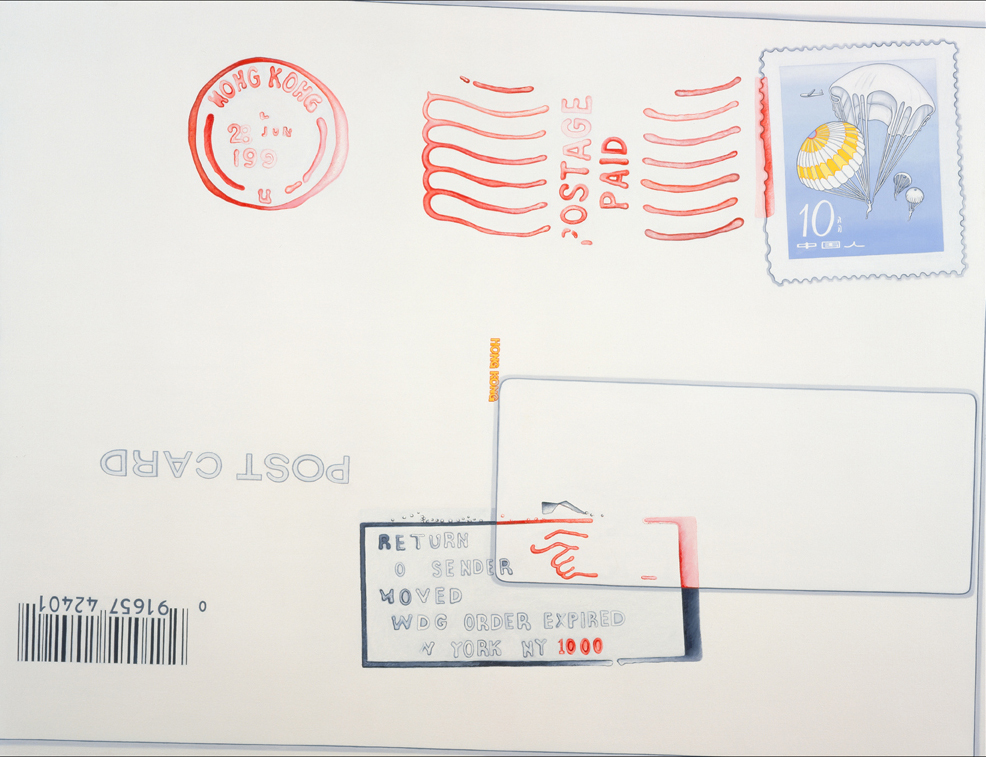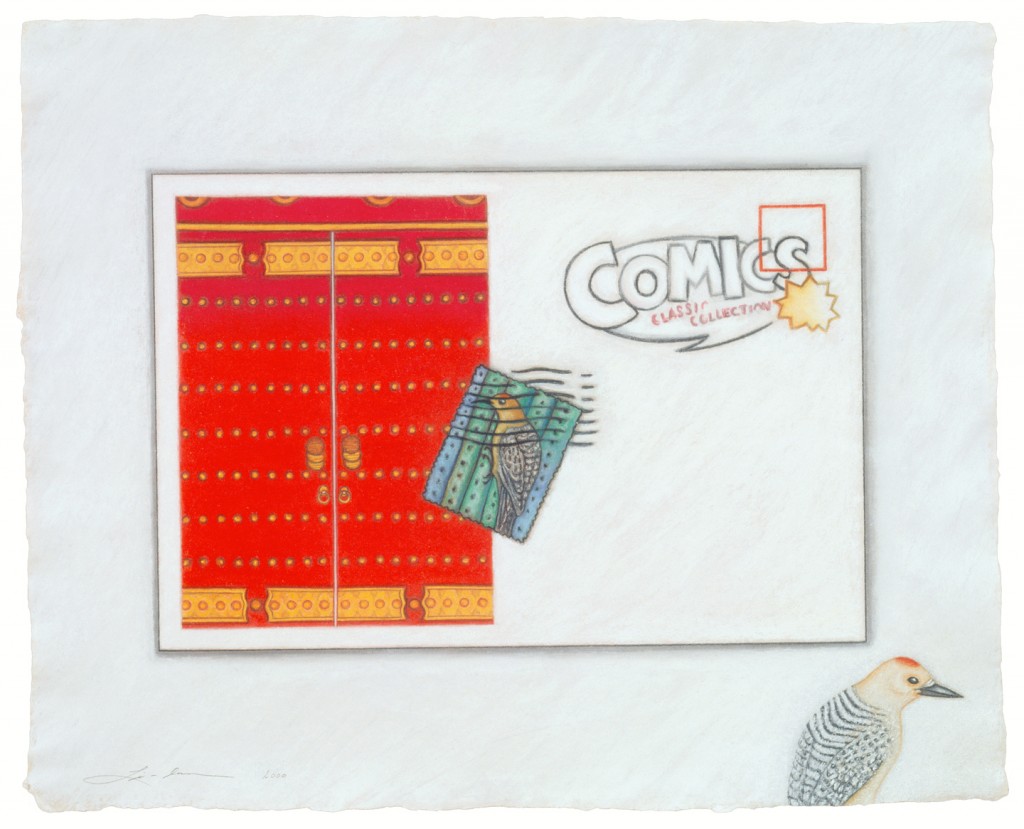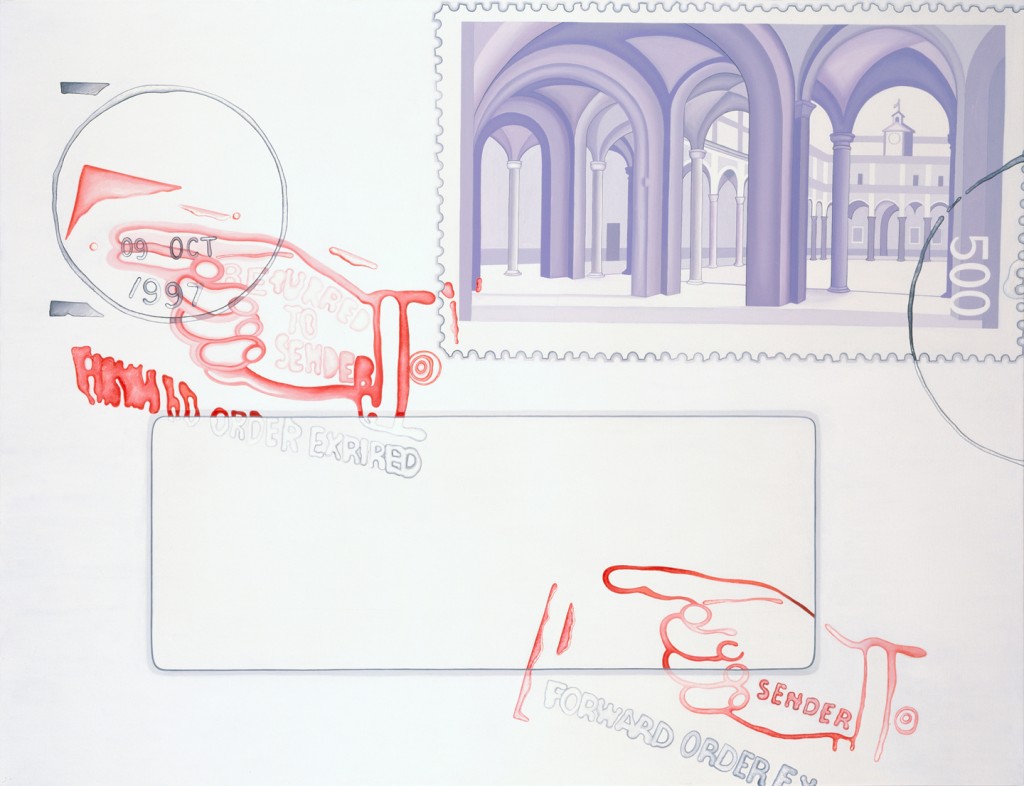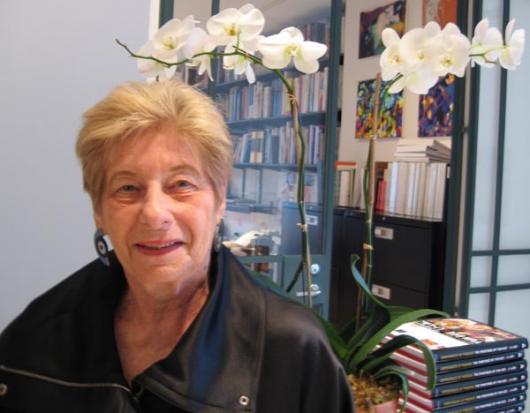What I am terming internationalism of all so-called nationalisms has a history that is beginning to be mined. Historically, what we might now call multiculturalism might have been called ‘cosmopolitanism’.(1)
This exhibition of the paintings of Li-lan is dedicated to the critique of old certainties about culture and place, in this instance about cosmopolitanism as a more precise form of multiculturalism. While the notion of ‘hybridity’ has become a postmodern cliché in the practice of deciphering the bits and pieces of each racial, ethnic and cultural part, Li-lan’s work requires a different model in order to account for the unity of vision that emerges from being a citizen of the world, “… between different spaces, different geographies, and different cultures.”(2) Her life and work are characteristic of a post-national kind of belonging formed through experiences of passage.
 Postage Paid: Return – 1998
Postage Paid: Return – 1998
 Comics: Classic Collection – 2000
Comics: Classic Collection – 2000Over the course of her career, attempts have been made to correlate Li-lan’s work to a multiplicity of styles. Her paintings have been called surrealist, but her work is always about real things. Although they have been identified with Pop art, Li-lan’s paintings make a delicacy of the ordinary, and are located within the easel painting tradition. In contrast to Minimalism, her surfaces support complex imagery: the structure of her work is abstract unlike most photo-realist images. The paintings are painterly unlike the works in most of these ‘isms.’ Japanese and Chinese painting have also been referenced. However, the “eastern” elements are absorbed in a most subtle manner, or they are so obvious as to preclude citing them as sources. Identification of her work with any single mode impedes engagement with those refined, almost empty surfaces that are replete with cross-cultural implications.
In Li-lan’s paintings and pastels, fragments of ordinary items that are often discarded without a second glance are beautifully rendered through intense observation: the serrated edges of stamps, spiral bindings, torn edges, loose-leaf holes and computer bar codes. Li-lan’s particular blend of style and reference is narrated in her paintings through renditions of blank ledgers and notepapers, stamps and postal marks from around the world. They serve as “metaphor” for the weave that encompasses her own form of cosmopolitanism. In relation to stamps, some come from cards and letters sent by friends, some she acquires from mail sent to others, and some are purchased because they resonate with possibilities for yet unformed shapes and meanings. These signs of address introduce notions about travel, history, geography and forms of communication relevant to contemporary sensibilities. Stamps and postmarks center around words and images about security and insecurity: moved; returned; protected; forwarded; received; expired; registered; cancelled; entered. Through these subtle strategies she images the anxieties hovering over the contemporary psyche.
 Rome: Forward Order Expired – 1998
Rome: Forward Order Expired – 1998
In her more recent work, architectural images vie with the earlier postmarks to evoke her love of the early Renaissance and the Romanesque. In particular, those perfectly formed perspectival spaces that resonate in silence like the courtyard in Rome: Forward Order Expired. On the surfaces of Li-lan’s paintings images reference passage and displacement, interchanging in a soundless, non-dimensional space. They sometimes overlap, but never clash. Everything is paper-thin: some images are smudged; shadow forms are neatly edged. Presence and absence co-exist on the same plane. These oils and pastels are pictures of almost virtual places referencing the real from both a macroscopic and microscopic viewpoint. She creates a world of anxiety that exists in a cool place so that contradictions can be contemplated and revered. This is Li-lan’s unique offering through her paintings.
1. Elizabeth Sussman. “Curator’s Work: The Pragmatics of Internationalism,” Global Visions, ed. Jean Fisher (London: Kalo Press, 1994) p. 167
2. Alice Yang, Li-lan, Correspondences: Recent Paintings, exh. Cat. New York, Art Projects International, 1996

Joyce Brodsky is professor emeritus of art and theory at the University of California, Santa Cruz. She is the author of the first major exhibition catalogue of Yun Gee’s paintings and the book, Experiences of Passage: The Paintings of Yun Gee and Li-lan.